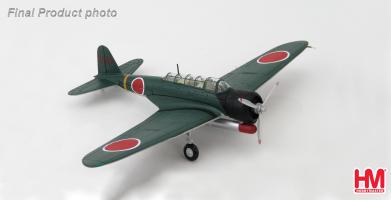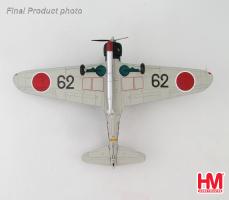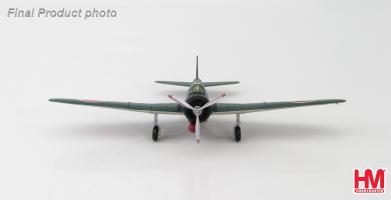Hobby Master Archive
Air Power Propellers 1/72
B5N
B5N1 Type 97 Attack Bomber "Kate" Aircraft Carrier "Ryujo" Flying Group, 1942
Specifications for the Nakajima B5N “Kate”
Dimensions B5N1 and B5N2 Length - 33 ft 9.5 in (10.3 m) Wingspan - 50 ft 10 15/16 in (15.518 m) Height - 12 ft 1.65 in (3.70 m)
Weight B5N1 Empty - 4,643 lb (2,106 kg) Loaded - 8,157 lb (3,700 kg) B5N2 Empty - 5,024 lb (2,279 kg) Loaded - 8,378 lb (3,800 kg)
Engine B5N1 - Nakajima Hikari 3, 770 hp, 9-cylinder, air-cooled radial B5N2 - Nakajima NK 1B Sakae 11, 1,000 hp, 14-cylinder, air-cooled radial Performance B5N1 Maximum Speed - 229 mph @ 6,560 ft (2,000 m) Service Ceiling - 24,280 ft (7,400 m) Normal Range - 679 miles (1,092 km) Maximum Range - 1,404 miles (2,259 km) B5N2 Maximum Speed - 235 mph @ 11,810 ft (3,600 m) Service Ceiling - 27,100 ft (8,260 m) Normal range - 608 miles (978 km) Maximum Range - 1,237 miles (1,990 km)
Armament B5N1 and B5N2 1 x flexible rear-firing 7.7 mm Type 92 machine gun Bombs - 1,764 lb (800 kg) Or 1 x 1,764 lb (800 kg) torpedo
Hobby Master 1/72 Air Power Series HA2009 B5N1 Type 97 Attack Bomber “Kate” Aircraft Carrier “Ryujo” Flying Group, 1942
Die-cast metal.
Fully assembled.
Superb detailing in 1/72 scale.
Pre-painted with pad applied markings.
Comes with crew figures.
Comes with bombs.
Display stand included.
Option to display model with wheels up or down.
Minimum use of plastic.
Very collectable.
The Nakajima B5N1 first flew in January 1937. It was quite unique for a carrier-aircraft with its low mono wing that folded for storage and wide-track inward folding retractable landing gear. The new Kates were far superior to its competition, the TBD Devastator and the Fairey Swordfish however it did have its shortcomings. It was very poorly armed for self defense and required A5M escort protection. Also the crew and fuel tanks had no protection. The B5N1 was replaced by the improved B5N2.
This Kate belonged to the 1st Koku Kantai (Daiichi Air Fleet), 4th Koku Sentai (Naval Carrier Division) assigned to the carrier Ryujo. The Ryujo (Prancing Dragon) was launched in April 1933 and commissioned in May 1933. It didn’t have a superstructure and since it was a flush-decked carrier all of the normal equipment and duties were housed and operated from the front lip under the flight deck. On August 24, 1942 during the Battle of the Eastern Solomons the Ryujo was struck by three 1,000 pound bombs and a torpedo eventually sending it to the bottom.
| Added to archive | 2015-11-19 |
| Last modified | 2015-11-19 |
| Leaflet | 2015-03-01 March 20152015-02-01 February 2015 |







